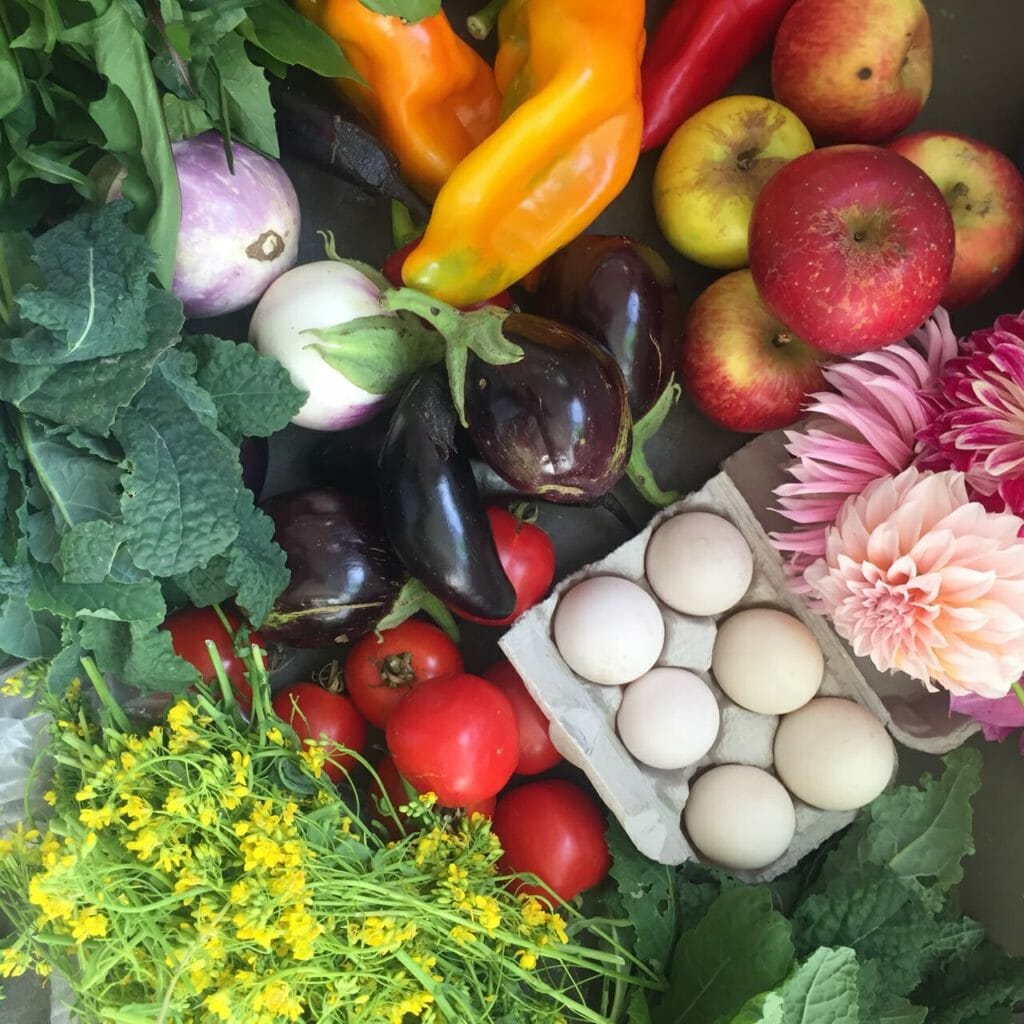Committing to eat better in the New Year doesn’t have to mean a dramatic overhaul of your diet or eliminating entire food groups. Making little tweaks here and there can make a big impact over the long haul without making you feel deprived and craving the drive-thru. It’s a process. Several years ago I gave up soda. Lately, I’ve been aiming to boost vegetables in my breakfast. In essence, it’s about small changes over time. So, in keeping with that approach, here are 25 ideas to boost nutrients, cut empty or excess calories, eat more sustainably, or all of the above.
So go ahead. Pick one. Any one. Or come up with your own. And if you do, please share.
- Add vegetables to breakfast. Whirl spinach into smoothies, scramble eggs with leftover veggies, or pile half a bagel with avocado, tomato, cucumber, or carrots.
- Opt out of high calorie coffee drinks. Consider the difference between a Starbucks large white chocolate mocha at 640 calories and 18 grams of saturated fat and a small cappuccino with low-fat milk at just 90 calories and 1.5 grams of saturated fat. This is an extreme example, but you get the idea.
- Swap your snacks. Rely on nutrient-rich whole foods instead of processed ones. A bag of potato chips and a small handful of nuts may have the same calories, but the latter will nourish and fill you up in the way chips will not.
- When it comes to sweets, keep portions petite. A small amount can really satisfy such as an ounce of dark chocolate, a scoop of vanilla frozen yogurt with berries, or a miniature cupcake.
- Split meals out with a table mate or take home half for the next day. Calories in restaurant meals are often way out of scale with healthy eating. Consider, for example, that the shrimp pasta at the Cheesecake Factory tops 3000 calories. Yikes.
- Skip or scale back sodas and sugary drinks. You may be surprised to know how much sugar gets added to iced tea, juices, and sports drinks. Go for good ole H2O, bubbly water with a splash of juice, fruity spa water, or hot and cold tea instead.
- Look for leaner cuts of meat. The meat you buy can have a significant impact on fat and calories. Choose sirloin over rib eye and you’ll save nearly 100 calories and about 15 grams of fat in just four ounces.
- Close the kitchen after dinner to avoid late night snacking.
- Belly up to the bar a little less. The calories in beer, wine, and spirits can add up quickly.
- Pack a lunch instead of buying one. Homemade lunches tend to be cheaper and you get to control what’s in there.
- When you eat out, ask for a veggie or fruit side so you get plenty of produce even when dining out.
- Opt for less quantity, but more quality when it comes to buying poultry and meat. Organic, pastured chicken and grass fed beef, for example, are pricey but better for you, better for the environment, and nicer to beast on your plate!
- Expand your fruit and vegetable repertoire. A colorful variety of fruits and veggies is key for maximum vitamins, minerals, and phytochemicals. Get inspired by going to farmer’s market or signing up for a CSA. Sunchokes anyone?
- Add in foods high in Omega-3s such as walnuts, flax seeds, chia seeds, salmon, and sardines. Most of us aren’t getting enough of these healthy fats.
- Cook more often; eat out less, you’ll probably eat lighter and eat better.
- Experiment with whole grain flours in baking. Whole wheat white flour and whole wheat pastry flour tend to do quite well in many desserts, pancakes, quickbreads, and the like.
- Explore more with beans and legumes. They’re cheap, nourishing, delicious, with a huge variety of options from red lentils to chickpeas to pinto beans.
- Aim to fill half your plate with fruits and veggies, round out the rest with protein foods and grains.
- Switch your peanut butter. If you’re buying peanut butter with added sugar and partially-hydrogenated or hydrogenated fats, choose one with little more than peanuts and salt. One day, I promise, Skippy will start to taste like dessert.
- Honor your hunger meter. Eat when you’re hungry. Stop eating when you’ve had your fill.
- Swap out processed grains for whole grains: brown rice, whole-grain bread, whole wheat tortillas, farro, quinoa, and so on.
- Aim for five or fewer ingredients in packaged foods. Read labels and shy away from processed foods with a laundry list of ingredients.
- Work more veggies into soups, stews, sauces and casseroles. Chopped onions, garlic, leafy greens, carrots, mushrooms, and other veggies can be added quite seemlessly into so many dishes you already cook.
- Get smart on seafood by learning which species are sustainable and low in environmental pollutants and which are best avoided. Seafood Watch is a good place to start.
- Give whole grain pasta a try. It may take a while to find one that your family loves, but over time kids (and you) can really develop a taste for it.
